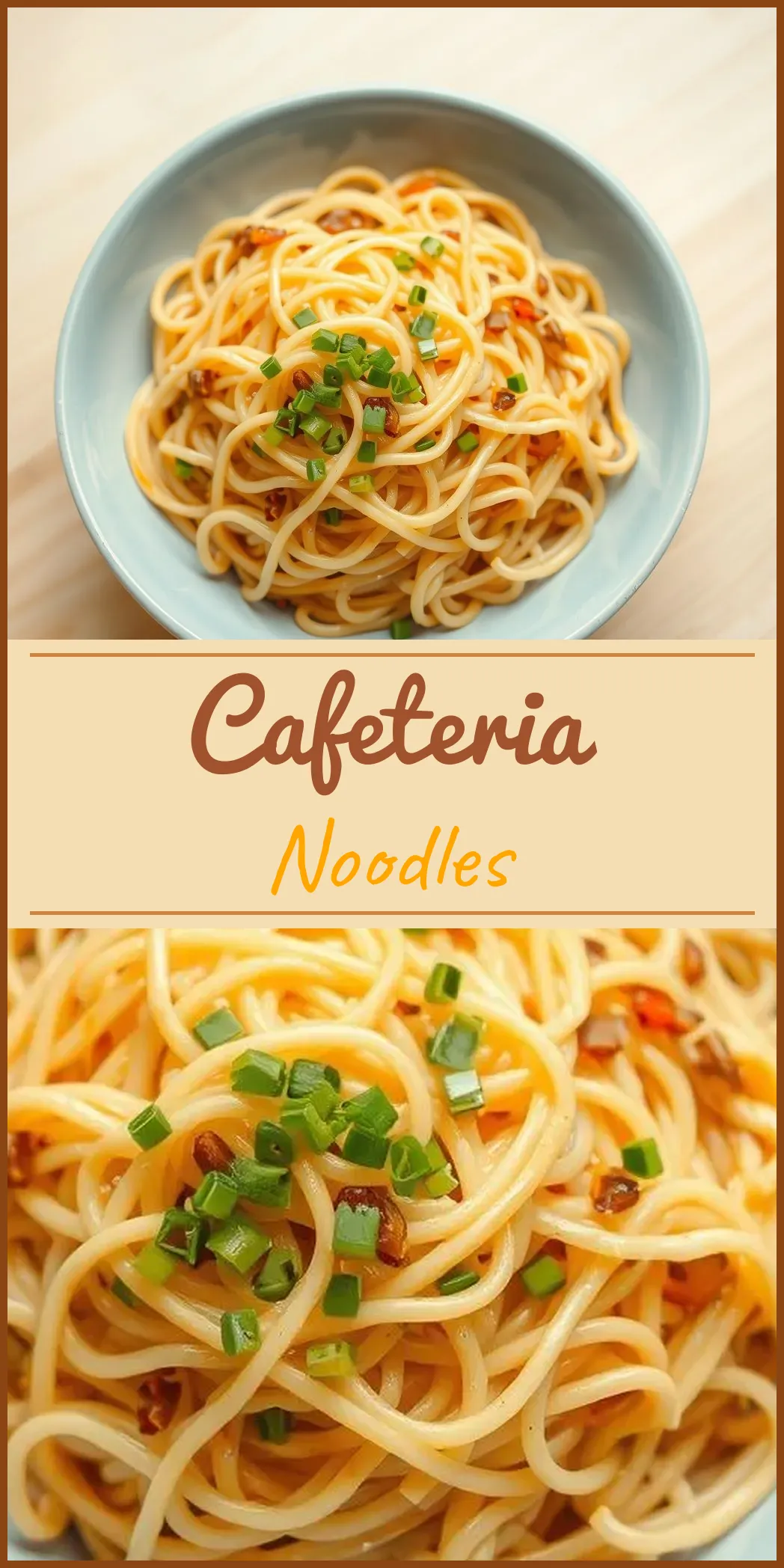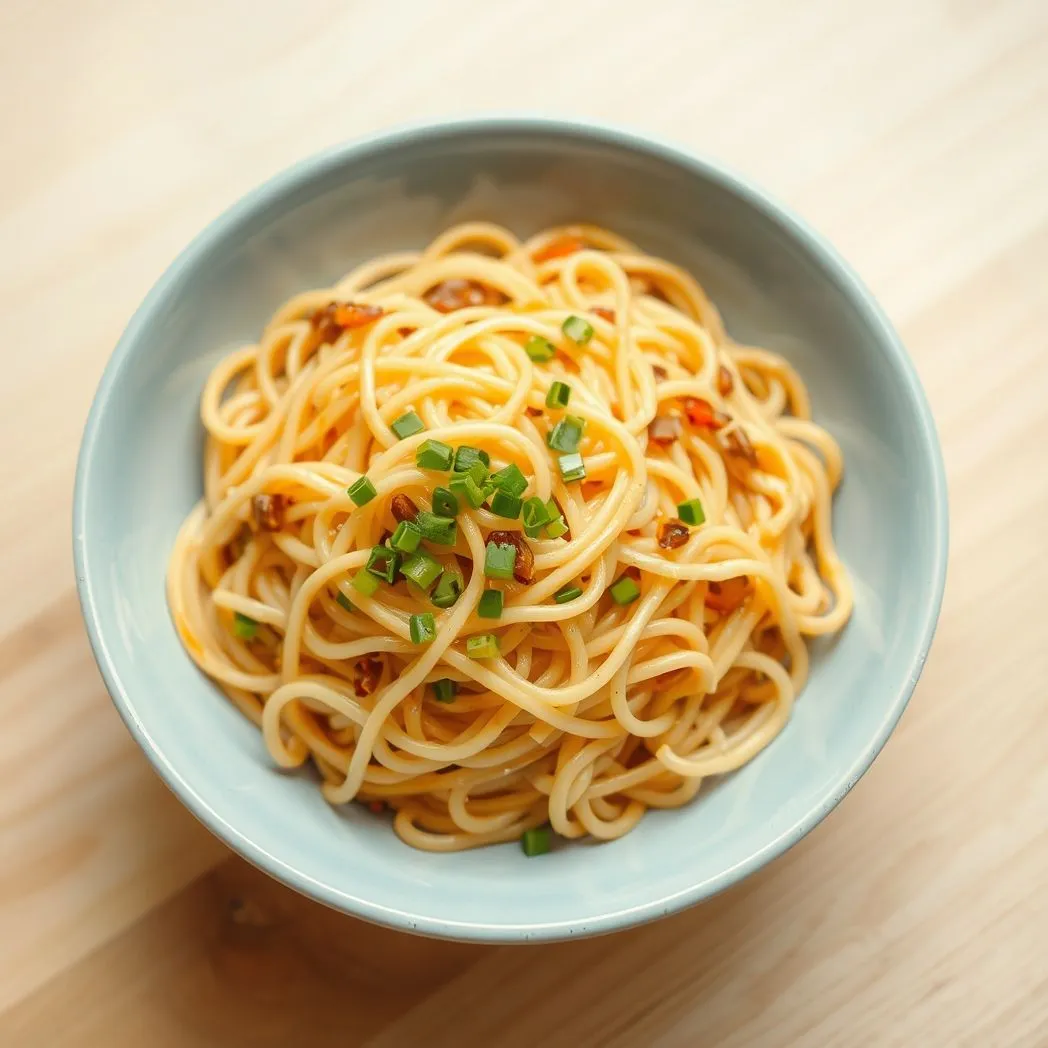Cafeteria noodles evoke nostalgic memories of simple, comforting meals. This dish features tender egg noodles bathed in a savory, creamy sauce. With just a few basic ingredients, you can recreate a timeless comfort dish in your own kitchen. In this article, you’ll find an in-depth guide to crafting perfect cafeteria noodles. We delve into the origins, ingredients, instructions, tips, and variations. Let’s begin our journey into a world where classic flavor meets ease of preparation.
The Inspiration Behind Cafeteria Noodles
Many of us have fond memories of school cafeterias and the meals we enjoyed there. Cafeteria noodles come as a twist on these childhood favorites. The dish is simple yet indulgent, providing comfort and nostalgia. Its creamy texture and savory flavor capture the well-being of a warm hug on a cool day. The classic combination of egg noodles, chicken broth, and flavorful seasonings makes this meal both satisfying and versatile.
A Blend of Simplicity and Rich Flavor
- Simplicity: The recipe uses accessible ingredients found in most pantries.
- Rich Taste: A blend of chicken stock, bouillon, and cream of chicken soup forms a sauce that is both silky and robust.
- Versatility: Adjust the dish with proteins, vegetables, or spices to suit your taste.
This dish has earned popularity on social media and among home cooks. Its growing allure lies in its ability to be easily adapted without sacrificing taste.

Ingredients: The Building Blocks
The secret to great cafeteria noodles lies in quality ingredients. Each component contributes to the final flavor and texture of the dish.
Core Ingredients
- Extra Wide Egg Noodles: They provide a hearty foundation for the dish. Their broad shape allows the sauce to cling to every strand.
- Chicken Stock: Used for boiling the noodles, this stock imparts a rich, savory base.
- Chicken Bouillon Cube: When dissolved in the stock, the cube delivers an intense, concentrated chicken flavor.
- Cream of Chicken Soup: This ingredient boosts the creaminess and should be well-blended with the stock to create a uniform sauce.
- Salted Butter: Essential for the finishing touch, the butter enriches the sauce with a velvety texture.
Seasonings and Garnishes
- Garlic Powder: A small amount adds depth and a subtle kick.
- Fresh Parsley: This herb lends brightness and a pop of color to the dish.
- Salt and Pepper: Essential for balancing the overall flavor.
Optional Additions for Variations
- Protein Options: Cooked chicken, sausage slices, or even tofu for a vegetarian twist.
- Additional Vegetables: Broccoli, peas, bell peppers, and mushrooms can be added for extra nutrition and texture.
- Cheese: A sprinkle of Parmesan or cheddar can elevate the creamy sauce further.
Step-by-Step Cooking Process
Preparing cafeteria noodles is straightforward. Follow these clear, sequential steps to ensure perfect results every time.
Preparing the Base
- Boil the Chicken Stock:
- In a medium to large pot, bring the chicken stock to a boil.
-
Dissolve the chicken bouillon cube in the boiling stock. Stir well to ensure the flavor is evenly distributed.
-
Cooking the Noodles:
- Once the stock is at a rolling boil, add the extra wide egg noodles.
- Allow the noodles to cook until tender. The time may vary, but they typically require 8-10 minutes. Stir occasionally to prevent sticking.
Creating the Creamy Sauce
- Integrate the Cream of Chicken Soup:
- Lower the heat slightly and stir in the cream of chicken soup.
-
Mix thoroughly until the sauce becomes smooth and uniformly combined with the stock.
-
Add Seasonings:
- Sprinkle in the garlic powder. Taste the sauce and adjust with salt and pepper as necessary.
- Continue stirring to ensure the flavors meld together perfectly.
Finishing Touches
- Incorporate the Butter:
- Remove the pot from the heat source.
-
Add salted butter. Stir until fully melted and combined with the sauce, resulting in a velvety finish.
-
Let the Noodles Rest:
- Cover the pot with a lid.
-
Let the noodles sit for a few minutes. This step allows the flavors to settle and the sauce to thicken slightly.
-
Garnish and Serve:
- Just before serving, sprinkle fresh chopped parsley on top for a burst of color and freshness.
- Serve immediately while hot. Enjoy the comforting aroma and rich taste.
Semantically Related Tips and Techniques
In the realm of creative cooking, small modifications can bring new life to classic meals. Below are several techniques that incorporate semantic layers and related culinary concepts to enhance your cafeteria noodles.
Enhancing the Flavor Depth
- Aromatics: Sauté finely chopped onions or garlic in a small amount of oil before adding the chicken stock. This step creates a base reminiscent of more elaborate soups.
- Herb Infusion: Experiment by adding dried basil or thyme during the boiling stage. These herbs intensify the fragrant profile and add layers of complexity.
- Cheese Variation: Stir in a small amount of grated Parmesan while the sauce is warm. The melted cheese blends seamlessly with the butter for an extra flavor boost.
Adapting for Dietary Preferences
- Vegetarian Options: Replace chicken stock with vegetable broth, substitute the bouillon cube with vegetable bouillon, and use cream of mushroom soup instead of cream of chicken.
- Gluten-Free Alternative: Use gluten-free noodles available at most grocery stores. Verify that all condiments, especially the bouillon, are gluten-free.
Practical Cooking Advice
- Time Management: You can prepare the stock and boil the noodles simultaneously. This multitasking approach can reduce overall cooking time.
- Consistency Checks: If the sauce is too thick, add a splash more stock or water to achieve a desirable consistency.
- Texture Tweaks: For added crunch and flavor contrast, consider topping the finished dish with toasted breadcrumbs or a light dusting of crushed nuts.
Variations and Creative Twists
While the traditional cafeteria noodles recipe offers simplicity and comfort, exploring adaptations can make your dish uniquely yours.
Protein Enhancements
- Rotisserie Chicken: Shred pre-cooked rotisserie chicken and toss it into the noodles just before serving. This not only saves time but also infuses a rich flavor.
- Sausage Medley: Slice your favorite type of sausage and sauté until browned. Add these slices to the noodles for a heartier version of the dish.
- Seafood Option: For those who enjoy a different protein profile, add steamed shrimp. The saltiness of the seafood complements the creamy sauce well.
Veggie-Forward Variants
- Green Boost: Incorporate spinach or kale at the end of the cooking process. The leafy greens wilt quickly and add a burst of color and nutrients.
- Mushroom Medley: Sauté a mix of mushrooms before adding them to the noodles. Their umami flavor integrates beautifully with the creamy sauce.
- Crisp Texture: Bell peppers, lightly sautéed, can provide a refreshing crunch that contrasts with the soft noodles.
Practical Storage and Reheating Tips
Leftovers are common in many kitchens, and storing your cafeteria noodles properly ensures they remain delicious for future meals.
Storage Recommendations
- Refrigeration: Allow the noodles to cool to room temperature. Transfer the leftovers to an airtight container. Store in the refrigerator for 3-5 days.
- Freezing: For longer storage, toss the cooled noodles with a drop of olive oil. Place them in a freezer-safe bag or container, eliminating as much air as possible. They can be frozen for 2-3 months.
Reheating Methods
- Microwave Reheat:
- Place the desired portion into a microwave-safe dish.
- Add a splash of water or extra chicken broth.
- Cover and reheat in 30-second intervals. Stir between each session until thoroughly heated.
- Stovetop Reheat:
- Place the noodles in a pan over medium-low heat.
- Stir frequently to ensure even warming. Add more liquid if required to prevent the sauce from drying out.
Following these steps guarantees that your cafeteria noodles maintain their creamy texture and savory flavor, even after being stored.
Expert Tips for Perfecting Your Noodles
Achieving the best texture and flavor in cafeteria noodles is all about attention to detail.
Key Techniques
- Consistent Stirring: Stir consistently during the boiling phase to prevent the noodles from sticking. A simple wooden spoon works best.
- Watch the Heat: Avoid high temperatures when adding the butter. Removing the pot from the burner ensures the butter remains intact and does not burn.
- Mind the Timing: Overcooking can lead to mushy noodles. Keep a close watch and perform taste tests during the final minutes of boiling.
Troubleshooting Common Issues
- Sauce Too Thick:
- Add a small amount of extra chicken broth or a splash of water.
- Stir well until the desired consistency is achieved.
- Noodles Overcooked:
- Set a timer for proper cooking intervals.
- Taste a noodle a minute before the expected cooking time to check for doneness.
- Lack of Flavor:
- Adjust seasonings during the final stirring phase.
- Consider topping the dish with a squeeze of lemon juice for a bright counterbalance.
Cafeteria noodles offer a delicious, comforting meal that is as versatile as it is easy to prepare. With a base of widely available ingredients and the flexibility to incorporate various proteins, vegetables, and seasonings, this dish can be tailored to your taste and dietary needs. Whether you’re preparing a quick dinner on a busy weeknight or a nostalgic meal to share with family, these noodles bring a satisfying balance of creaminess, savory notes, and a touch of familiar warmth.
By mastering the fundamental steps outlined in this article and experimenting with creative variations, you gain confidence in the kitchen. Each stage of preparation contributes to the overall success of the dish, from selecting quality ingredients to perfecting the consistency of the sauce. While the basics remain unchanged, your personal touches and experiments with herbs, proteins, or even a splash of cheese can elevate the dish to new heights.
This recipe encourages you to explore culinary creativity while honoring traditional comfort food. The cafeteria noodles shine as an example of how simple ingredients can combine to create a dish that leaves a lasting impression. Enjoy the process of cooking and savor the moments shared with loved ones over a steaming bowl of these delicious noodles.
So, roll up your sleeves, gather your ingredients, and dive into the delightful world of cafeteria noodles. Relish not only the end result but also the journey. Remember, every great meal begins with passion, creativity, and a willingness to experiment.
Happy cooking, and enjoy every bite of your homemade cafeteria noodles!

Cafeteria Noodles
These cafeteria noodles went viral on TikTok for good reason! They are easy to make. They are creamy and so delicious!
Ingredients
- Fresh parsley, for garnish (optional)
- 1/2 cup salted butter
- 1/2 teaspoon garlic powder
- 4 cups chicken stock
- 16 ounces extra wide egg noodles
- 1 can cream of chicken soup
- 1 chicken bouillon cube
Instructions
- Pour the chicken stock into a large pot or deep skillet. Add the bouillon cube. Heat the mixture over medium-high heat. Bring it to a rolling boil.
- Once boiling, add the egg noodles to the pot. Stir. Allow the stock to return to a boil.
- Stir in the cream of chicken soup and garlic powder. Let the mixture boil for an additional 2 minutes. Stir occasionally.
- Take the pot off the heat. Add the butter. Stir until the butter is fully melted. Incorporate the butter into the noodles.
- Place a lid on the pot. Let the noodles sit for a few minutes. This will allow the flavors to meld.
- Give the noodles one final stir. Then, transfer them to a serving dish. If desired, garnish with a sprinkle of fresh parsley.
- Serve it hot. Enjoy!




